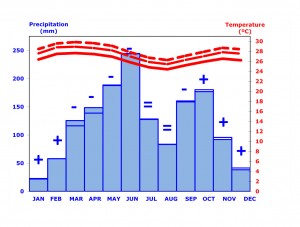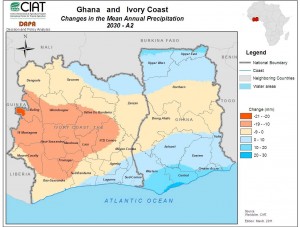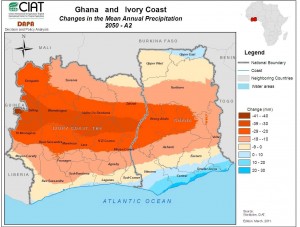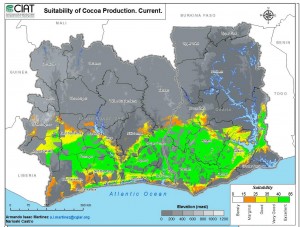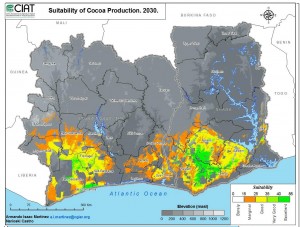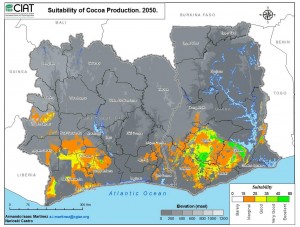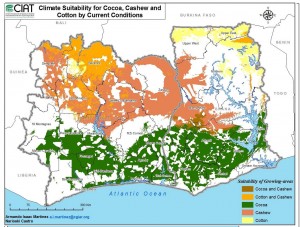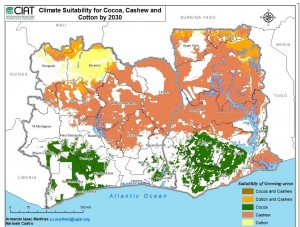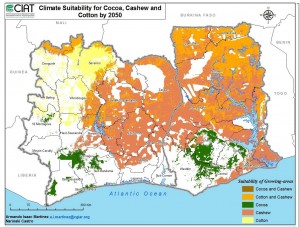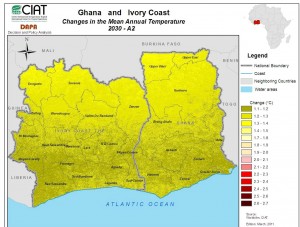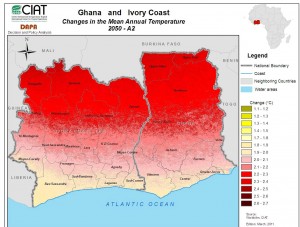Ghana and Ivory Coast in Africa produce more than half of world’s supply of chocolate, but, as temperatures rise and extreme weather becomes the norm, cocoa production in the two countries will begin decreasing by 2030 and getting much worse by 2050 according to 2011 study from the International Center for Tropical Agriculture (CIAT).
By 2050, in the African nations of Ghana and Ivory Coast, It is predicted that temperatures will rise by at least 2 Celsius degree. That will cause cocoa trees to lose more water and to produce less cocoa fruit in return.
The impact of climate change:
- Figure 1: Climate trend summary for 2030 and 2050. Blue bars show current and 2050 precipitation trends and red lines show the current, 2030 and 2050 temperature
- Figure 2: Mean annual precipitation changes by 2030
- Figure 3: Mean annual precipitation changes by 2050
- Figure 4: Current suitability for cocoa production within cocoa-growing regions of Ghana and Côte d’Ivoir
- Figure 5: Suitability for cocoa production in 2030
- Figure 6: Climate suitability for cocoa production in 2050
- Figure 7: Current climate suitability for cocoa, cashew and cotton production in Ghana and Côte d’Ivoire
- Figure 8: Climate suitability by 2030 for cocoa, cashew and cotton in Ghana and Côte d’Ivoire
- Figure 9: Climate suitability by 2050 for cocoa, cashew and cotton in Ghana and Côte d’Ivoire
- Figure 10: Mean annual temperature changes by 2030
- Figure 11: Mean annual temperature changes by 2050
Source: 2011 study from the International Center for Tropical Agriculture (CIAT)

